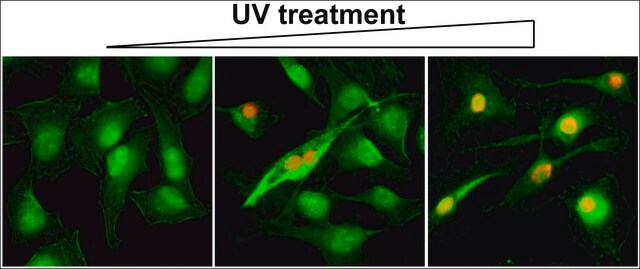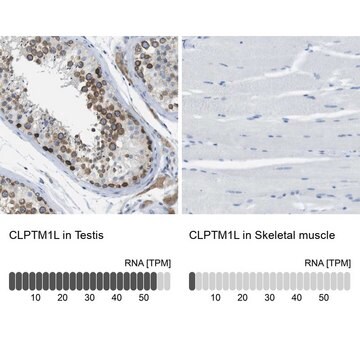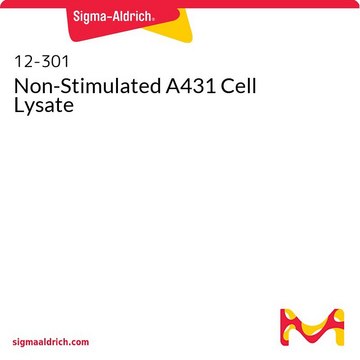MABE416
Anti-Cisplatin-DNA-Addukt-Antikörper, Klon ICR4
clone 1CR4, from rat
Synonym(e):
CP9/19, Cisplatin DNA modification
About This Item
Empfohlene Produkte
Biologische Quelle
rat
Qualitätsniveau
Antikörperform
purified antibody
Antikörper-Produkttyp
primary antibodies
Klon
1CR4, monoclonal
Speziesreaktivität
human
Methode(n)
ELISA: suitable
dot blot: suitable
immunohistochemistry: suitable
Isotyp
IgG2aκ
Versandbedingung
wet ice
Posttranslationale Modifikation Target
unmodified
Allgemeine Beschreibung
Spezifität
Immunogen
Anwendung
Immunhistochemische Analyse: Eine repräsentative Charge aus einem unabhängigen Labor wies Cisplatin-DNA-Addukte in Plattenepithelkarzinomen von Kopf und Hals nach. (Welters, M. J., et al. (1999). Ann Oncol. 10(1):97-103.).
Epigenetik & Zellkernfunktion
Chromatin-Biologie
Qualität
Dot-Blot-Analyse: Eine 1:1.000-Verdünnung dieses Antikörpers wies Cisplatin-DNA-Addukte in 1,0 und 0,5 µg mit Cisplatin behandelter DNA aus HeLa-Zelllysaten nach.
Physikalische Form
Lagerung und Haltbarkeit
Sonstige Hinweise
Haftungsausschluss
Sie haben nicht das passende Produkt gefunden?
Probieren Sie unser Produkt-Auswahlhilfe. aus.
Lagerklassenschlüssel
12 - Non Combustible Liquids
WGK
WGK 1
Flammpunkt (°F)
Not applicable
Flammpunkt (°C)
Not applicable
Analysenzertifikate (COA)
Suchen Sie nach Analysenzertifikate (COA), indem Sie die Lot-/Chargennummer des Produkts eingeben. Lot- und Chargennummern sind auf dem Produktetikett hinter den Wörtern ‘Lot’ oder ‘Batch’ (Lot oder Charge) zu finden.
Besitzen Sie dieses Produkt bereits?
In der Dokumentenbibliothek finden Sie die Dokumentation zu den Produkten, die Sie kürzlich erworben haben.
Kunden haben sich ebenfalls angesehen
Unser Team von Wissenschaftlern verfügt über Erfahrung in allen Forschungsbereichen einschließlich Life Science, Materialwissenschaften, chemischer Synthese, Chromatographie, Analytik und vielen mehr..
Setzen Sie sich mit dem technischen Dienst in Verbindung.







